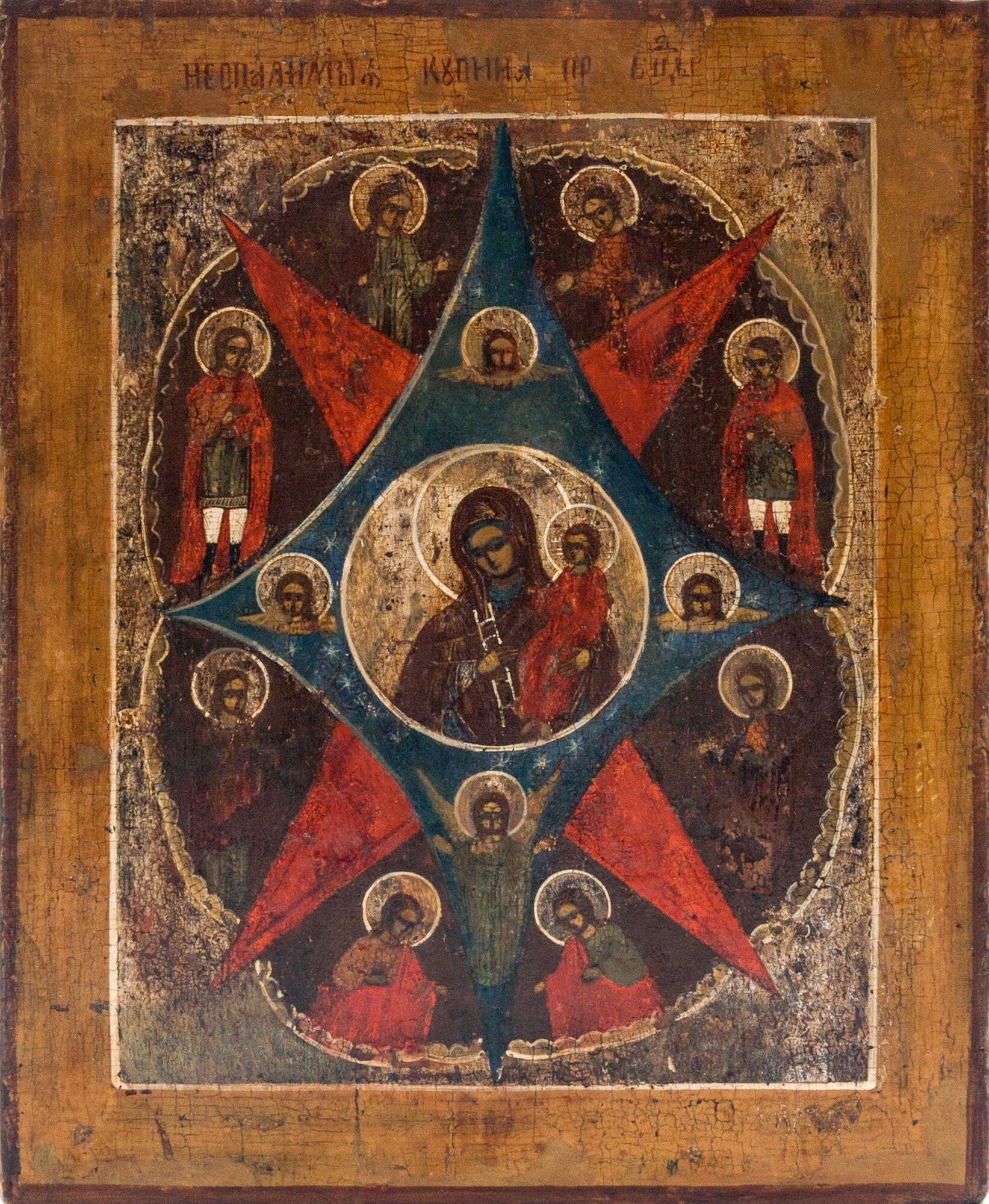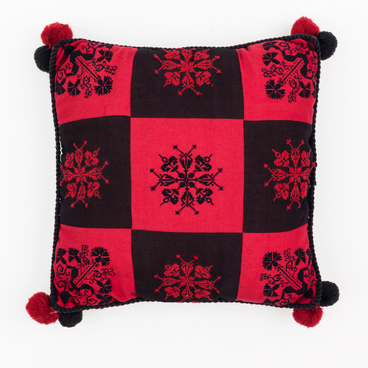When in 1929 Lenin House-Museum was created in Ulyanovsk, there were no icons on display. The decision not to restore the part of the interior related to Orthodox culture was taken by the General Directorate of Scientific, Scientific and Artistic and Museum Institutions. The eldest daughter of the Ulyanovs, Anna Ulyanova-Elizarova, supported it.
In 1992, the Lenin Memorial’s exhibition was replenished with the first icons of Nicholas the Wonderworker, Prophet Elijah, and Savior the Almighty. The Neopalimaya Kupina icon (‘Unburnt Bush’ Icon of the Mother of God)
appeared only in 2006 and was given to the museum by the director Tatyana Bryliaeva. On December 9, 2008, the icon was placed in an exhibition with the restored appearance of the Ulyanovs' winter kitchen.
Neopalimaya Kupina is one of the iconographic images of the Mother of God in Orthodoxy. It comes from the Old Testament. According to ancient texts, Moses once saw a burning bush. When he came close to see why the bush would not go out, God appeared to him and called upon him to lead the people of Israel into the Promised Land.
An octagonal star made up of two pointed quadrangles with concave edges surrounds the image of the Mother of God and the Christ Child. One of them is red, symbolizing flame; the second one is painted in green and reminds of the green of a mysterious bush. An unknown artist has depicted a ladder in the hands of the Virgin: it refers to the Old Testament ladder of Jacob, which connects Heaven and Earth. It touches the shoulder of the Virgin Mary. This means that the ‘ladder’ has elevated mankind from the earth to the Kingdom of Heaven.
Another theme of the icon is the ministry of the angels to Our Lady and the worship of the heavenly powers to the birth of God from the Virgin. The master arranged the archangels in the rays of the eight-pointed star. They represent the elements — thunder, wind, lightning, rain, dew, frost, and gloom. Each of them holds in his hands the corresponding attributes: a bowl, a lantern, a cloud, a sword, a torch, a closed cabinet for icons — a kiot, which means frost, and a naked figure symbolizing the wind.
An unknown master created this icon at the end of the 19th century in Simbirsk Governorate. It was painted according to traditional canons — in tempera on a wooden board, primed with levkas (a white paint mixture consisting of a binder mixed with chalk, gypsum, pigment, or any combination of these). To obtain the levkas, the chalk was mixed with animal or fish glue, then linseed oil was added. On the icon there are abrasions, and part of the image has been lost over time. Because of this, it is impossible to discern the faces of the Virgin Mary and some of the archangels.
In 1992, the Lenin Memorial’s exhibition was replenished with the first icons of Nicholas the Wonderworker, Prophet Elijah, and Savior the Almighty. The Neopalimaya Kupina icon (‘Unburnt Bush’ Icon of the Mother of God)
appeared only in 2006 and was given to the museum by the director Tatyana Bryliaeva. On December 9, 2008, the icon was placed in an exhibition with the restored appearance of the Ulyanovs' winter kitchen.
Neopalimaya Kupina is one of the iconographic images of the Mother of God in Orthodoxy. It comes from the Old Testament. According to ancient texts, Moses once saw a burning bush. When he came close to see why the bush would not go out, God appeared to him and called upon him to lead the people of Israel into the Promised Land.
An octagonal star made up of two pointed quadrangles with concave edges surrounds the image of the Mother of God and the Christ Child. One of them is red, symbolizing flame; the second one is painted in green and reminds of the green of a mysterious bush. An unknown artist has depicted a ladder in the hands of the Virgin: it refers to the Old Testament ladder of Jacob, which connects Heaven and Earth. It touches the shoulder of the Virgin Mary. This means that the ‘ladder’ has elevated mankind from the earth to the Kingdom of Heaven.
Another theme of the icon is the ministry of the angels to Our Lady and the worship of the heavenly powers to the birth of God from the Virgin. The master arranged the archangels in the rays of the eight-pointed star. They represent the elements — thunder, wind, lightning, rain, dew, frost, and gloom. Each of them holds in his hands the corresponding attributes: a bowl, a lantern, a cloud, a sword, a torch, a closed cabinet for icons — a kiot, which means frost, and a naked figure symbolizing the wind.
An unknown master created this icon at the end of the 19th century in Simbirsk Governorate. It was painted according to traditional canons — in tempera on a wooden board, primed with levkas (a white paint mixture consisting of a binder mixed with chalk, gypsum, pigment, or any combination of these). To obtain the levkas, the chalk was mixed with animal or fish glue, then linseed oil was added. On the icon there are abrasions, and part of the image has been lost over time. Because of this, it is impossible to discern the faces of the Virgin Mary and some of the archangels.



